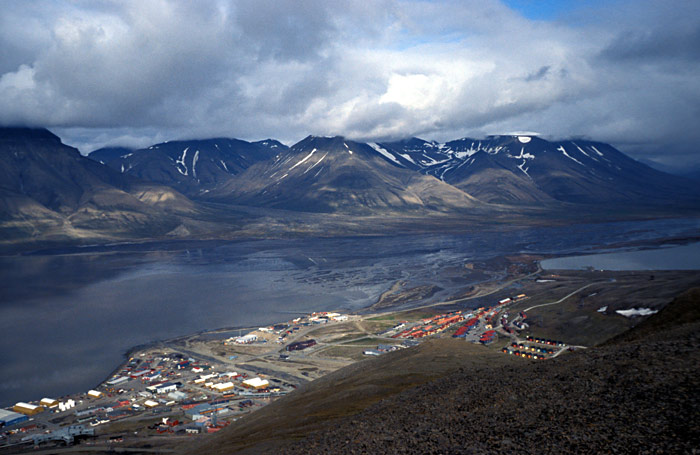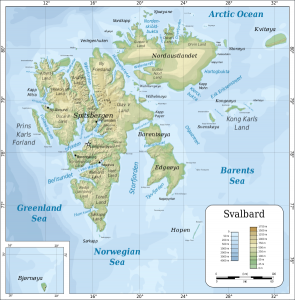- Travel to Svalbard
- Study in Svalbard
- Culture in Svalbard
- Svalbardian Art
- History of Svalbard
- Gastronomy in Svalbard
- Living in Svalbard
Svalbard is an archipelago that belongs to the Kingdom of Norway and is situated in the Arctic Ocean about midway between Norway and the North Pole. Only three of the Svalbard islands are inhabited; Spitsbergen, which is the largest one, Hopen and Bjørnøya (Bear Island). This overseas territory of Norway has only about 2400 inhabitants, of whom the majority live in the village of Longyearbyen on the island of Spitsbergen. The territory of Svalbard has about 61,000 km2, which is mostly covered with ice.
Although there seem to be evidence that Svalbard was visited by the Norsemen in the XII century, the discovery of the islands in 1596 is officially contributed to the Dutch explorer Willem Barents. During the XVII and XVIII centuries the islands were the basis for the Dutch,English and Basque whaling. In 1920 the Svalbard Treaty recognized that the islands belonged to Norway.
[ad] About 60% of the inhabitants of Svalbard are Norwegian and the remaining 40% are Russians and Ukrainians. The main activity on the island focuses in the Norwegian state-owned coal mine that hires about 60% of the population, whereas fishing and hunting are typical activities too. Svalbard is an important research center of the polar studies, having on its surface solar storm measuring centers and rare polar fauna, such as polar bears and polar foxes. In 2008 was established on the islands an important seed bank that holds the seeds of major industrial plants in the world.
Thanks to its polar location, Svalbard is characterized by contrasts. In fact, thousands of tourists visit its beautiful archipelago every year in order to devise the midnight sun in summer and the polar night in winter, and of course, its massive glaciers.
- Svalbard Photo Gallery
- Videos from Svalbard




